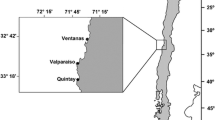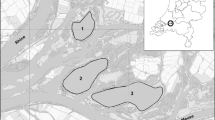Abstract
In this study, we measured trace metals (Cd, Cr, Cu, Ni, Pb, and Zn) in water and sediment from representative sites of Taihu Lake, with focus on the analysis of trace metal accumulation in Corbicula fluminea (bivalve). The results showed that the quality of water in Taihu Lake was generally good and the correlation was not found between Cu bioaccumulation in C. fluminea and the concentration in water and sediment. Thus, using the stable isotope tracer method, we studied Cu uptake from the water phase, the assimilation of Cu from the food phase, and the efflux of Cu in vivo by C. fluminea. The result revealed that this species exhibited a relatively lower efflux rate constant of Cu compared with other zoobenthos species. Using a simple bioenergetics-based kinetic model, Cu concentrations in the C. fluminea were calculated with the measured efflux rate. We put forward a novel method, which was taking the influence of biological kinetic on metal bioaccumulation into account to explain the field survey data.



Similar content being viewed by others
References
Adams WJ, Conard B, Ethier G, Brix KV, Paquin PR, DiToro DM (2000) The challenges of hazard identification and classification of insoluble metals and metal substances for the aquatic environment. Hum Ecol Risk Assess 6:1019–1038
Amiard JC, Amiard-Triquet C, Berthet B, Metayer C (1987) Comparative study of the patterns of bioaccumulation of essential (Cu, Zn) and non-essential (Cd, Pb) trace metals in various estuarine and coastal organisms. J Exp Mar Biol Ecol 106:73–89
Bai YC, Wu FC, Liu CQ, Li W, Guo JY, Fu PQ, Xing BS, Zheng J (2008) Ultraviolet absorbance titration for determining stability constants of humic substances with Cu(II) and Hg(II). Anal Chim Acta 616:115–121
Bilos C, Colombo JC, Presa MJR (1998) Trace metals in suspended particles, sediments and Asiatic clams (Corbicula fluminea) of the Rĺo de la Plata Estuary, Argentina. Environ Pollut 99:1–11
Bing HJ, Wu YH, Sun ZB, Yao SC (2011) Historical trends of heavy metal contamination and their sources in lacustrine sediment from Xijiu Lake, Taihu Lake Catchment, China. J Environ Sci 23:1671–1678
Bossuyt BTA, Janssen CR (2005) Copper regulation and homeostasis of Daphnia magna and Pseudokirchneriella subcapitata: influence of acclimation. Environ Pollut 136:135–144
Chi QQ, Zhu GW, Alan LD (2007) Bioaccumulation of heavy metals in fishes from Taihu Lake, China. J Environ Sci 19:1500–1504
Croteau MN, Luoma SN (2005) Delineating copper accumulation pathways for the freshwater bivalve Corbicula using stable copper isotopes. Environ Toxicol Chem 24:2871–2878
Croteau MN, Luoma SN (2007) Characterizing dissolved Cu and Cd uptake in terms of the biotic ligand and biodynamics using enriched stable isotopes. Environ Sci Technol 41:3140–3145
Croteau MN, Luoma SN (2009) Predicting dietborne metal toxicity from metal influxes. Environ Sci Technol 43:4915–4921
Croteau MN, Luoma SN, Topping BR, Lopez CB (2004) Stable metal isotopes reveal copper accumulation and loss dynamics in the freshwater bivalve Corbicula. Environ Sci Technol 38:5002–5009
Deng BL, Zhu LY, Liu M, Liu NN, Yang LP, Du Y (2011) Sediment quality criteria and ecological risk assessment for heavy metals in Taihu Lake and Liao River. Res Environ Sci 24:33–42 (in Chinese)
Fan WH, Wang WX, Chen JS, Li XD, Yen YF (2002) Cu, Ni, and Pb speciation in surface sediments from a contaminated bay of northern China. Mar Pollut Bull 44:816–832
Fan WH, Wu CG, Zhao CM, Yu T, Zhang Y (2011) Application of enriched stable isotope technique to the study of copper bioavailability in Daphnia magna. J Environ Sci 23:831–836
Guillard RRL (1975) Culture of phytoplankton for feeding marine invertebrates. In: Smith W, Chanley M (eds) Culture of marine invertebrate animals. Plenum Press, New York, pp 29–60
Lam IKS, Wang WX (2006) Accumulation and elimination of aqueous and dietary silver in Daphnia magna. Chemosphere 64:26–35
Li XD, Coles BJ, Ramsey MH, Thornton I (1995) Sequential extraction of soils for multielement analysis by ICP-AES. Chem Geol 124:109–123
Li XD, Shen ZG, Wai OWH, Li YS (2001) Chemical forms of Pb, Zn and Cu in the sediment profiles of the Pearl River. Mar Pollut Bull 42:215–223
Luoma SN, Rainbow PS (2005) Why is metal bioaccumulation so variable? Biodynamics as a unifying concept. Environ Sci Technol 39:1921–1931
Mao JQ, Chen QW, Chen YC (2008) Three-dimensional eutrophication model and application to Taihu Lake, China. J Environ Sci 20:278–284
Pan K, Wang WX (2009) Biodynamics to explain the difference of copper body concentrations in five marine bivalve species. Environ Sci Technol 43:2137–2143
Peltier GL, Meyer JL, Jagoe CH, Hapkins WA (2008) Using trace element concentrations in Corbicula fluminea to identify potential sources of contamination in an urban river. Environ Pollut 154:283–290
Qin BQ, Xu PZ, Wu QL, Luo LC, Zhang YL (2007) Environmental issues of Lake Taihu, China. Hydrobiologia 581:3–14
Shen J, Liu EF, Zhu YX, Hu SY, Qu WC (2007) Distribution and chemical fractionation of heavy metals in recent sediments from Lake Taihu, China. Hydrobiologia 581:141–150
Shoults-Wilson WA, Unrine JM, Rickard J, Black MC (2010) Comparison of metal concentrations in Corbicula fluminea and Elliptio hopetonensis in the Altamaha River system, Georgia, USA. Environ Toxicol Chem 29:2026–2033
Su GY, Gao ZS, Yu YJ, Ge JC, Wei S, Feng JF, Liu FY, Giesy JP, Lam MHW, Yu HX (2010) Polybrominated diphenyl ethers and their methoxylated metabolites in anchovy (Coilia sp.) from the Yangtze River Delta, China. Environ Sci Pollut Res 17:634–642
Sun PY, Wang B (2003) Metal content and contamination assessment in Corbicula fluminea from the Yangtze River estuary. J Appl Environ Biol 10:079–083 (in Chinese)
Tessier A, Campbell PGC, Bisson M (1979) Sequential extraction procedure for the speciation of particulate trace metals. Anal Chem 51:844–851
Wang WX, Griscom SB, Fisher NS (1997) Bioavailability of Cr(III) and Cr(VI) to marine mussels from solute and particulate pathways. Environ Sci Technol 31:603–611
Wang WX, Qiu JW, Qian PY (1999) Significance of trophic transfer in predicting the high concentration of zinc in Barnacles. Environ Sci Technol 33:2905–2909
Yu T, Zhang Y, Hu XN, Meng W (2012a) Distribution and bioaccumulation of heavy metals in aquatic organisms of different trophic levels and potential health risk assessment from Taihu lake, China. Ecotox Environ Safe 81:55–64
Yu T, Zhang Y, Meng W, Hu XN (2012b) Characterization of heavy metals in water and sediments in Taihu Lake, China. Environ Monit Assess 184:4367–4382
Zhang XL, Xu Q, Man SK, Zeng XY, Yu YX, Pang YP, Sheng GY, Fu JM (2013) Tissue concentrations, bioaccumulation, and biomagnification of synthetic musks in freshwater fish from Taihu Lake, China. Environ Sci Pollut Res 20:311–322
Zhao CM, Fan WH, Wang WX (2009) Aqueous and dietary copper uptake and elimination in Daphnia magna determined by the 67Cu radiotracer. Environ Toxicol Chem 28:2360–2366
Zhu MY, Zhu GW, Zhao LL, Yao X, Zhang YL, Gao G, Qin BQ (2013) Influence of algal bloom degradation on nutrient release at the sediment–water interface in Lake Taihu, China. Environ Sci Pollut Res 20:1803–1811
Acknowledgments
This work was supported by the National Natural Science Foundation of China (No. 51290283), Major Science and Technology Program for Water Pollution Control and Treatment of China (No. 2012ZX07501001), and China’s National Basic Research Program (No. 2011CB935700).
Author information
Authors and Affiliations
Corresponding author
Additional information
Responsible editor: Philippe Garrigues
Rights and permissions
About this article
Cite this article
Fan, W., Ren, J., Wu, C. et al. Using enriched stable isotope technique to study Cu bioaccumulation and bioavailability in Corbicula fluminea from Taihu Lake, China. Environ Sci Pollut Res 21, 14069–14077 (2014). https://doi.org/10.1007/s11356-014-3325-6
Received:
Accepted:
Published:
Issue Date:
DOI: https://doi.org/10.1007/s11356-014-3325-6




